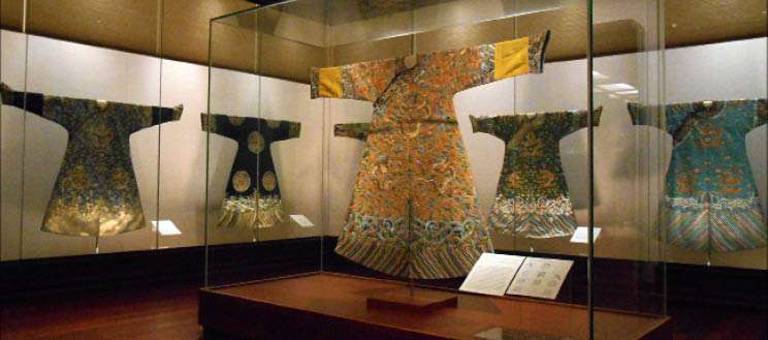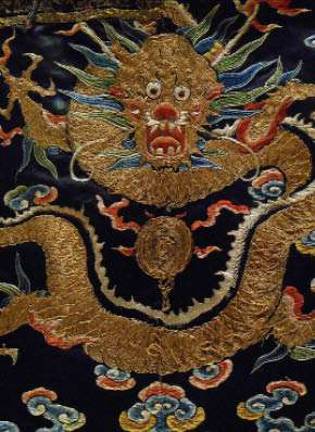Deep Inside The Met, The Robes of Ancient China


Two gems in the museum's Asian Decorative Arts galleries
The Metropolitan Museum of Art is almost like a city within the city. And sometimes, when exploring a city, an unplanned turn leads to a serendipitous surprise. The Asian Decorative Arts galleries at the Met may be a few steps off the beaten path, but the journey to the far reaches of the museum is particularly worth the trip right now.
Climbing the stairs to the third floor brings you to an array of small but astonishing sculptures. Colors of the Universe, on view through March 8, 2015, presents a collection of hardstone carvings from the Qing dynasty (1644?1911). Most can be held in a single hand. All are delicate yet intense, highly polished, and show incredible virtuosity in the handling of the material. To see them is to be convinced of what would be hard to imagine - that these beautiful sculptures that weigh pounds are made of precious stones we usually measure in carats. Amethyst, carnelian, coral and jade are fashioned into purple, deep orange, pale green and turquoise figures of deities, fruits and animals.
Just steps beyond lies a gorgeous collection of sumptuous Chinese court robes. Chinese Court Costumes presents 11 of them in all, and, due to the fragile nature of textiles, some have not been seen for more than half a century. They are rare and spectacular, and will be on display through October 19th.
We've all seen these glorious robes in paintings and films. Seeing them in person gives an entirely different sense. A woman's red festival robe in embroidered silk may have been worn in summer. It's so thin you can see right through both layers, but its dragons carry enough weight to make up for it. Dragons are everywhere in the gallery. The number of claws each dragon brandishes indicates the social rank of the wearer. The five clawed variety, reserved for royalty, gnarl their superiority from gold, black and blue robes, and even from a strangely iridescent one in which peacock feather fibers are wrapped around the embroidery silk. They are meant to impress, and they do.
The exhibit is complemented and completed by a 21st century response to the festival robe by contemporary artist Wang Jin. His 2008 work, Dream of China, recalls the robes surrounding it in the gallery, but it is made of PVC vinyl and embroidered with fishing wire. Rather than floating silk, it hangs from a heavy, imposing iron hook. The curators tell us that it is the artist's commentary on consumerism and industrialization, but it also seems to speak to the crushing weight of previous societal structures.
By including this final piece in the exhibition, windows are opened to thoughts about imperialism, rule, class and wealth. But the 10 spectacular Qing dynasty robes also allow viewers to just experience the startling beauty achieved in the court robes of China.